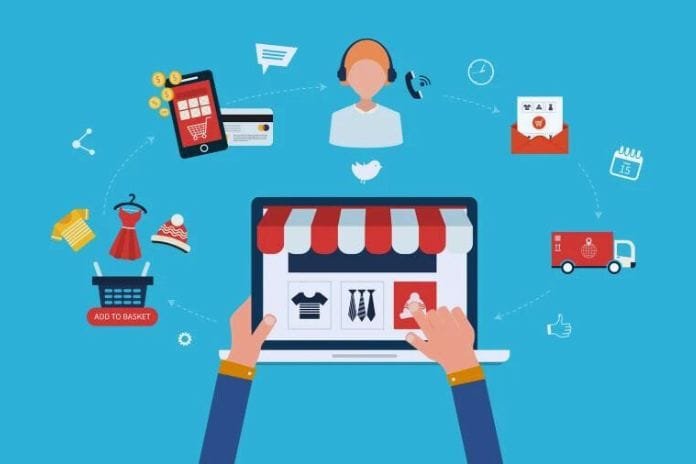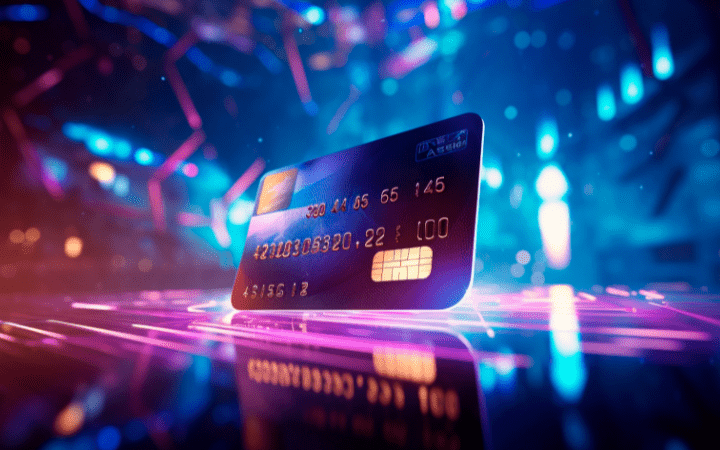Purchasing Practices Are Associated With E-Commerce Sector

Designating the online purchasing activity carried out via a mobile device (smartphone or tablet), m-commerce has gradually become a part of the daily lives of India. To what extent do consumers favor their mobile devices when online shopping? This is the subject addressed in this study carried out by Capterra.
With the advent of mobile devices, a new era of social and business interactions has emerged. These devices have transformed the Indian’s daily lives by influencing the modes of communication, navigation, and online shopping. In conjunction with these technologies, an additional opportunity has opened up for companies to attract and engage consumers:
- M-commerce or mobile commerce
- Describing any purchasing process from a smartphone or tablet
- Portable devices such as connected watches
Extension of e-commerce practices, m-commerce is also at the origin of adaptations on the side of organizations, as evidenced by the growing development of applications and sites optimized for mobile browsing. To analyze the place occupied by m-commerce in the habits of India and better understand which parameters influence their mobile purchasing experience, Capterra conducted a study between January and February 2023 with 1022 consumers making purchases on the Internet at least twice a year.
From E-Commerce To M-Commerce, Towards A Hybrid Online Shopping Experience
From small businesses to large retailers, having an online sales channel has now become an added value and essential for the visibility of their offers. In India, according to the figures communicated by the FEVAD, nearly 146.9 billion euros were spent by India to purchase products and services online in 2022, confirming a growth in e-trade by almost 13.8% compared to the previous year.
If computers were the first devices used for e-commerce, mobile devices have contributed to a diversification of purchasing options offered to consumers. For nearly 53% of consumers surveyed, these devices are used frequently for shopping on the web, while 44% designate the computer as their tool of choice in the same scenario. While tablets (11%) remain used at a lower frequency, smartphones alone represent 38% of mobile devices selected by our participants.
Connected watches (4%), some models allowing you to pay for purchases within applications, remain little-used media for m-commerce. Smartphones appear to be the spearheads of mobile commerce, more convenient to carry with you daily than tablets and benefiting from a more diversified and democratized offer than connected watches. This trend was confirmed when our panel was asked to select their favorite devices for the different stages of their online shopping journey.
Although the computer remains the device they prefer to compare prices (57%), consult reviews (48%), request additional information (54%), or even benefit from help from the service customer (54%), its use remains closely followed by that of mobile phones in most of these scenarios. In some cases, the use of smartphones is very close to, or even greater than, that of computers. Thus, 46% of all participants say they use their smartphone when finalizing a payment compared to 49% preferring a computer; 60% prefer their mobile to track the delivery of a product, while 34% opt for a computer.
The first steps of online commerce were marked by a so-called “desktop first” approach: because they were the first dedicated media, computers were, for a long time, the devices for which the browsing experience of websites was a priority. In addition to this traditional development strategy, which is mainly known to online consumers, ergonomic issues can work in favor of computers. Whether it’s the size of their screens or keyboards, computers can be more convenient when it comes to researching and evaluating the characteristics of a product.
However, for more and more organizations, the question arises of a strategy for creating websites and applications that integrate mobile devices, such as the principles of responsive design or mobile-first. In addition to their flexibility, allowing you to finalize a purchase at any time and anywhere, mobile devices have their functionalities: push notifications or real-time tracking of deliveries via specific applications using mobile geolocation; all aspects bring added value to the customer journey.
Profile Of Shoppers Shopping Online Via A Mobile Device
53% of consumers in our panel preferred the smartphone, ahead of the tablet (36%) or even the connected watch ( 1%). These results tend to confirm the omnipresence of mobile commerce in the purchasing practices of India. To define the profile of these buyers, we wanted to know more about their preferred sales channels and online shopping habits.
Marketplaces Are The Preferred Purchasing Channel For 48% Of Consumers.
From mobile applications to specialized marketplaces, various channels are accessible for consumers to purchase. Which ones are favored mainly by m-commerce customers? For 48% of buyers surveyed, the websites of marketplaces such as Amazon or Aliexpress are the preferred sales channels, followed by the mobile applications of these platforms (23%).
Stimulated by the growth of e-commerce, marketplaces also establish themselves as key players in the e-commerce sector. To increase their reach among consumers, it is now essential for companies to explore the potential offered by these tools for their sales strategy. It should be noted that brand sites (13%) and mobile applications (7%) are used by a smaller number of consumers.
If the diversity of products and brands offered on a marketplace can explain such enthusiasm, another characteristic of these platforms can be highlighted. Because they often bring together an extensive catalog of sellers and, above all, have a networking role, marketplaces have also focused their proposition on their ability to facilitate navigation and search for users to identify the product or service of their products. Choice, regardless of the device used.
Fashion Items And Books Top The List Of Most Purchased Products Via M-Commerce
From booking a plane ticket to acquiring a new novel, purchasing a significant variety of goods and services via mobile commerce is now possible. Among the different sectors linked to mobile sales, fashion is the one which attracts the most significant number of buyers, whether for clothing (60%) or even shoes (40%). Subject to significant growth during the health crisis and benefiting from new trends such as second-hand shopping applications, the online fashion market represented nearly 26.2 billion euros in 2022, according to estimates from the Economic Observatory of the India Fashion Institute (IFM).
With formats adapted to mobile devices, such as audiobooks or digital books, the book industry grew by nearly 3.6% in 2021, according to figures provided by the National Publishing Union. This sector is also trendy, offering a complimentary offer to traditional works with 38% of consumers surveyed.
Regarding the purchase of services, the reservation of leisure and entertainment activities (34%) and tourist activities (31%) are among the sectors attracting the most support from consumers. These two areas benefit particularly from the popularity of already established marketplaces, whether they are flight comparison sites, hotel reservation sites, or even online ticketing already known to the general public in recent years.
Customer Account Creation And “One-Click” Growing Practices
It is usual for an online buyer to be offered the option of “registering” or even “identifying” through an account associated with the sales platform visited. By creating an account, customers have a space where they can save their contact information, product shipping details, payment methods, and order history, and this automates this input process during a subsequent order.
These accounts are also a lever for companies to develop a loyalty strategy for their customers, allowing them to benefit from special offers or receive personalized communications, such as for their birthday. Our survey reveals that nearly 97% of mobile shoppers create a customer account at some point to make online purchases.
How often they do so is also essential, with 12% saying they “always” do an account creation, 31% “most of the time”, 41% “sometimes”, and 13% “rarely”. Only 3% say they never use it. One of the features often associated with creating a customer account is that of “one-click”. This option means consumers with an account can purchase with just one click without re-entering their payment information.
Nearly 91% of mobile shoppers say they have already made one-click payments during their shopping experience, with varying frequency, with 42% saying they do this action “sometimes”, 9% “often”, and 30 % do so more rarely. Only 19% say they never use this practice. For consumers, the “one-click” has various advantages.
By removing the step where users must enter information such as their card number, expiry date and CVC number while safeguarding their preferred payment method, “one-click” offers greater convenience when finalizing the purchase. This option also helps speed up the buying process, something often valued by modern consumers in the age of instant digital gratification.
Mobile Shoppers Value The Ease And Flexibility Of Access To M-Commerce
Using a mobile device abolishes two constraints generally associated with computers: time and space, since it is made possible to make purchases as soon as they wish, and whatever the user’s geographical area. Thus, These two advantages are highlighted by the mobile buyers in our panel, mentioning the possibility of buying at any time (58%) and the ease of access (57%) as the positive points associated with their shopping experience. Purchase.
In addition to these aspects, the speed of transactions (40%) is also one of the advantages mentioned by our respondents. When the customer’s mobile experience is optimized, it allows them to complete a transaction in a few moments while offering them different payment methods, whether via a payment application or by saving their banking information. This diversity of transaction methods is also one of the parameters evaluated positively by 14% of participants.
Lack Of Visibility Of Information And Security Issues Concern Consumers
Although flexibility and mobility are two of the most salient advantages of m-commerce, certain elements can sometimes be lacking when it comes to the visual experience for the consumer. For many mobile devices, the display capabilities remain limited, in particular, due to the small size of the screens and a lower resolution compared to computers.
The challenge remains daunting for mobile application developers and teams responsible for optimizing a site on this type of channel. 31% of mobile shoppers say they have difficulty viewing product information from their device, which could lead to abandoning a purchase in progress. One area where mobile commerce is particularly beneficial for businesses is data.
Mobile commerce can collect significant amounts of information about consumers, whether they decide to purchase through a mobile site, an app, or by being redirected through a social media platform. While a large share of consumers use their mobile phones to browse the web, bank and make purchases, security risk is among the concerns expressed by almost 27% of consumers making purchases on mobile.
While problems such as Internet connection (23%) may be due to factors external to the experience offered by online sellers, parameters such as slow loading (23%), an overabundance of notifications (20%), or even ergonomics not optimized for the mobile format (17%) relate to development problems associated with their mobile strategy. Unsuitable content that does not allow optimal speed of information display, abusive use of advertising messages, or insufficient optimization for mobile navigation are all factors that can harm consumers’ finalization of a purchase.
Improving Their Mobile Strategy Is A Crucial Issue For Businesses.
Online buyers’ experience is now multi-channel: whether via a computer or a mobile device, consumers expect to benefit from a purchasing journey adapted to their preferences. Although a sales strategy adapted to fixed devices such as computers should not be neglected, consumers’ growing interest in the principle of mobile purchasing suggests promising development opportunities for online sellers.
This is why a company needs to pay particular attention to developing architectures and marketing strategies adapted to m-commerce. Formatting images to load quickly and are more visible on mobile, simplifying the payment process, creating specific applications, or even offering features such as delivery tracking on mobile are all avenues to explore to take advantage of the opportunity presented by e-commerce.
Regardless of the company’s industry, customers should be presented with a clear policy on managing data collected during the mobile shopping journey while allowing them to have a secure connection. These parameters prove crucial to improving the user’s experience, the speed of transactions and the security of operations that must be deployed via their mobile devices.
Read Also: Digital Intelligence, Or How To Reconcile Yourself With Big Data!






